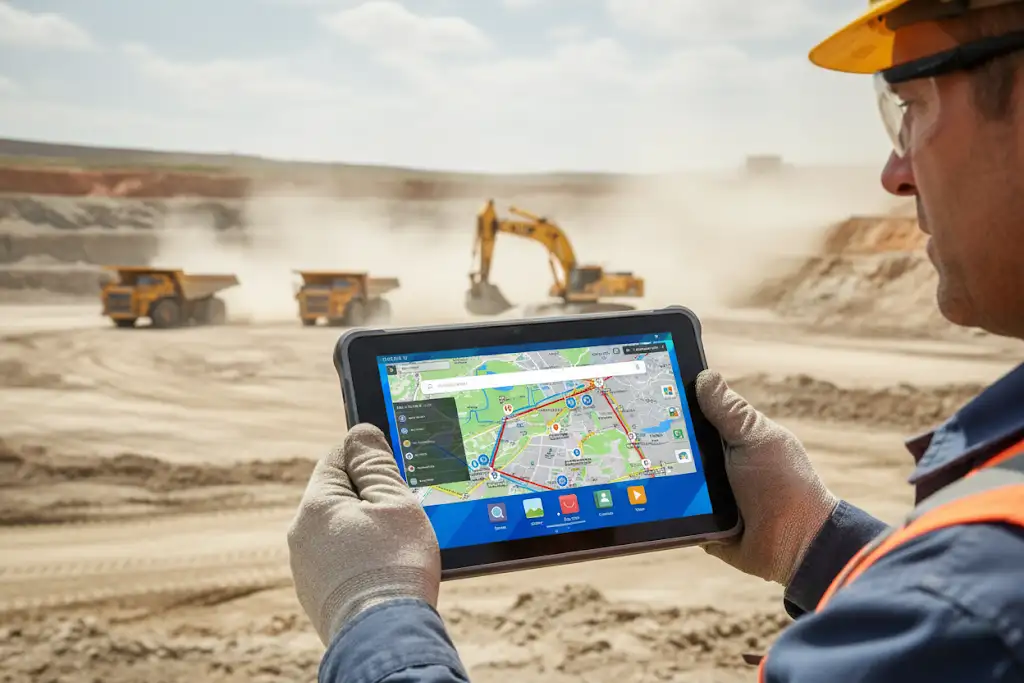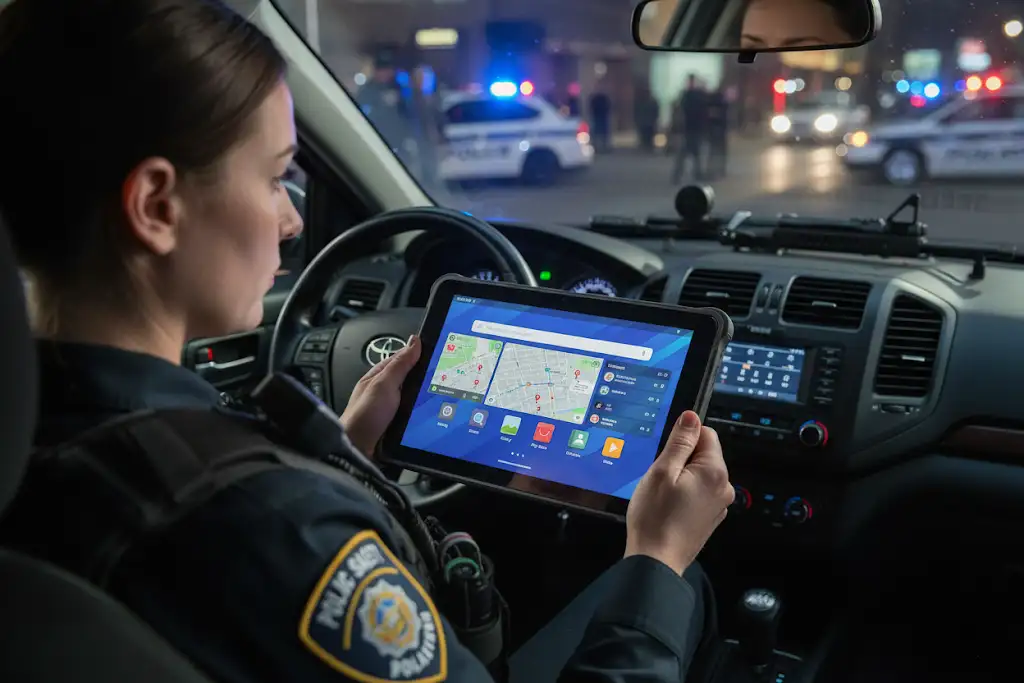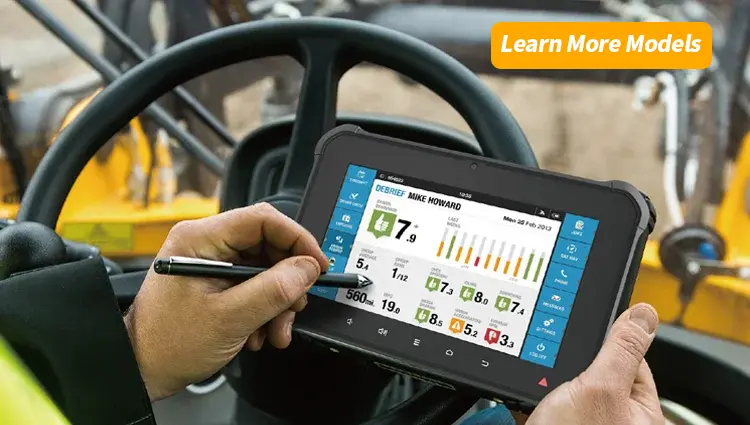Ruggedized Tablets: The Complete Guide for Industrial and Field Work Environments
- Understanding What Makes a Tablet Truly Rugged
- Why Field Professionals Choose Industrial-Grade Tablets
- Key Features That Define Professional-Grade Devices
- Selecting the Right Tablet for Specific Industries
- The Technology Inside: What Powers Rugged Performance
- Real-World Performance: Beyond the Specifications
- Accessories and Ecosystem Considerations
- Maintenance and Long-Term Support
- Making the Investment Decision
- The Future of Industrial Mobile Computing
- Conclusion
When your work takes you beyond the office walls—into construction sites, warehouses, manufacturing floors, or remote field locations—standard consumer tablets simply won’t cut it. The moment dust settles on the screen, rain starts falling, or the device takes its first tumble onto concrete, you’ll understand why professionals in demanding industries turn to ruggedized tablets.
These purpose-built devices represent a different philosophy in mobile computing. Rather than treating durability as an afterthought, manufacturers design every component—from the reinforced chassis to the specialized display—to withstand conditions that would destroy typical electronics within hours.

Understanding What Makes a Tablet Truly Rugged
The term “rugged” gets thrown around loosely in tech marketing, but genuine ruggedized tablets meet strict military and industry standards. The MIL-STD-810G certification tests devices against 29 different environmental conditions, including extreme temperatures, humidity, vibration, and impact. Meanwhile, IP (Ingress Protection) ratings specify exactly how well a device resists dust and water intrusion.
A fully rugged tablet typically carries an IP65 rating or higher, meaning it’s completely dust-tight and can withstand water jets from any direction. Many industrial-grade units achieve IP67 or IP68, allowing temporary submersion in water. These aren’t marketing claims—they’re standardized test results that predict real-world performance.
The construction itself differs fundamentally from consumer devices. Magnesium alloy frames, reinforced corners with shock-absorbing materials, and sealed port covers create a protective barrier around sensitive electronics. The display glass—often Corning Gorilla Glass or equivalent—sits behind a layer that allows gloved operation and remains readable in direct sunlight, solving two problems that plague standard tablets in field environments.
Why Field Professionals Choose Industrial-Grade Tablets
Three years ago, a utility company in the Midwest tried equipping their field technicians with consumer tablets in protective cases. Within six months, 40% of the devices had failed—cracked screens, water damage, and battery issues topped the list. After switching to ruggedized tablets, their device failure rate dropped to less than 5% annually, despite working in identical conditions.
This pattern repeats across industries. The upfront cost of a ruggedized tablet runs two to three times higher than consumer alternatives, but the total cost of ownership tells a different story. When you factor in replacement costs, productivity lost to device failures, and data security risks from damaged equipment, rugged devices often prove more economical over their typical 5-7 year lifespan.
Field service technicians value the reliability most. When you’re troubleshooting equipment on an offshore oil platform or diagnosing network issues during a storm, device failure isn’t just inconvenient—it can compromise safety and cost thousands in extended downtime. Knowing your tablet will function regardless of conditions eliminates a variable that shouldn’t exist in critical work.
Warehouse operations present different challenges where rugged tablets excel. Constant movement, occasional drops, and exposure to various temperatures as workers move between climate-controlled spaces and loading docks demand durability. Integrated barcode scanners and RFID readers streamline inventory management, while battery life extending beyond full shifts keeps operations flowing without interruption.
Key Features That Define Professional-Grade Devices
Display Technology and Readability
Sunlight-readable screens separate adequate ruggedized tablets from exceptional ones. Standard displays become mirrors in bright light, forcing workers to seek shade or shield the screen—wasting time and creating safety hazards. Quality rugged tablets employ high-brightness displays (typically 800-1000 nits) with anti-reflective coatings that remain legible even in direct sunlight.
Touch sensitivity presents another consideration. Capacitive touchscreens work beautifully with bare fingers but fail with work gloves. Better ruggedized tablets incorporate dual-mode technology, responding to both bare fingers and gloved hands, while some include optional stylus input for detailed work or signature capture.
Battery Life and Power Management
Field work doesn’t accommodate frequent charging breaks. Professional ruggedized tablets typically deliver 8-12 hours of continuous use, with some models offering hot-swappable batteries that allow uninterrupted operation across extended shifts. Intelligent power management systems automatically adjust screen brightness and processor performance based on conditions and remaining battery capacity.
Charging options matter too. While consumer tablets rely solely on USB charging, industrial models often include vehicle docking stations, desktop cradles, and sometimes even multi-bay charging stations that power up entire fleets of devices overnight.
Connectivity in Remote Locations
Reliable connectivity determines whether a tablet serves as a productivity tool or an expensive paperweight. Ruggedized tablets designed for field work include multiple connectivity options: 4G LTE or 5G cellular radios for wide-area coverage, dual-band Wi-Fi for facility networks, and Bluetooth for peripherals. Many incorporate GPS receivers—not consumer-grade chips, but professional GPS modules that maintain accuracy even in challenging environments.
Some specialized models include dedicated push-to-talk buttons and support for professional radio protocols, essentially functioning as both tablet and two-way radio in emergency services applications.

Selecting the Right Tablet for Specific Industries
Construction and Field Service
Construction sites present perhaps the ultimate stress test for mobile devices. Concrete dust, power tools generating vibration, exposure to cement and other corrosive materials, and the inevitable drops from scaffolding or work trucks create an unforgiving environment.
Construction-focused ruggedized tablets often include:
- Enhanced drop resistance (typically 6-8 feet onto concrete)
- Sealed ports with secure covers
- Anti-microbial coatings for shared devices
- Camera systems with measuring tools and annotation capabilities
- Integration with common construction management software
Healthcare and Pharmaceutical
Medical environments demand durability combined with hygiene considerations. Healthcare ruggedized tablets must withstand regular cleaning with harsh disinfectants while maintaining touchscreen functionality. Many medical-grade devices feature antimicrobial housings and completely sealed designs that allow thorough sanitization between patient encounters.
Battery hot-swap capability becomes critical in healthcare, where devices might be in use 24/7 across multiple shifts. Some models include integrated barcode scanners for medication verification, supporting safety protocols that reduce medication errors.
Manufacturing and Warehouse Operations
Manufacturing floor tablets need to handle industrial chemicals, extreme temperature variations, and constant movement. Integrated data collection tools—barcode scanners, RFID readers, and sometimes even thermal cameras—eliminate the need for separate equipment, streamlining workflows.
Warehouse-specific features often include:
- Extended battery life supporting full shifts
- Built-in scanning for inventory management
- Pistol grip or hand strap accessories for one-handed operation
- Compatibility with existing warehouse management systems
- Vehicle mounting solutions for forklift integration
Public Safety and Emergency Services
Police, fire, and EMS personnel need tablets that function flawlessly during critical moments. Beyond standard ruggedness, emergency services tablets often incorporate:
- Dedicated emergency buttons
- Enhanced security features including biometric authentication
- Night-vision compatible displays that don’t compromise situational awareness
- Integration with computer-aided dispatch systems
- Extended temperature ranges covering extreme heat and cold

The Technology Inside: What Powers Rugged Performance
Processor selection in ruggedized tablets balances performance with power efficiency and heat management. Unlike consumer tablets that can run hot during intensive tasks, rugged devices must maintain safe exterior temperatures even in sealed, dust-proof enclosures. Many use Intel Core processors or Qualcomm Snapdragon chips specifically selected for their thermal characteristics.
Memory and storage configurations typically exceed consumer tablet specs. Field applications often involve large CAD drawings, extensive forms, or detailed imagery, requiring 8GB or more of RAM and 128GB-512GB of solid-state storage. Some models include removable storage options for secure data transfer or easy device redeployment.
Operating system choices affect both functionality and long-term support. Windows tablets integrate seamlessly with existing enterprise software and support legacy applications that many industries still depend on. Android offers a familiar interface and extensive app ecosystem, while some manufacturers provide their own locked-down operating systems for specialized applications where security outweighs flexibility.
Real-World Performance: Beyond the Specifications
Laboratory testing provides baseline assurance, but field performance reveals true capability. Talk to technicians who’ve used the same ruggedized tablet for three or four years, and you’ll hear stories that specifications can’t capture: the tablet that survived a vehicle rollover, the device that kept working after being buried in snow overnight, the unit that took a direct hit from a pressure washer and continued functioning.
This reliability builds trust that transforms how field workers approach their jobs. When you know your tools won’t fail, you take them places and use them in ways you’d never risk with consumer electronics. That confidence enables the productivity gains that justify rugged tablet investments.
Accessories and Ecosystem Considerations
Purchasing a ruggedized tablet represents just one component of a complete mobile solution. Vehicle mounts, shoulder straps, hand grips, and carrying cases customize devices for specific use cases. Screen protectors and port covers extend device life, while spare batteries and charging solutions keep operations running.
Peripherals matter too. External barcode scanners, payment terminals, RFID readers, and specialized sensors expand tablet capabilities. Better ruggedized tablets include multiple expansion options—USB ports, serial connections, and dedicated expansion slots—that support these peripherals without compromising environmental sealing.
Maintenance and Long-Term Support
Unlike consumer tablets that become obsolete within two years, ruggedized tablets often remain in service for five to seven years or longer. This extended lifecycle demands different support considerations. Look for manufacturers offering:
- Extended warranty options (3-5 years standard)
- Advance replacement programs that ship replacements before failed units return
- Regular security updates throughout the device lifecycle
- Parts availability for repairs
- Trade-in or upgrade programs that protect initial investments
Some manufacturers provide configuration and deployment services, pre-loading software and configuring settings so devices arrive ready for immediate field deployment. For organizations managing fleets of tablets, centralized device management capabilities enable remote troubleshooting, software updates, and security monitoring.
Making the Investment Decision
Choosing the right ruggedized tablet requires honest assessment of actual needs versus perceived requirements. A warehouse operating exclusively indoors might not need the highest IP rating, while construction crews in desert climates must prioritize extreme temperature resistance.
Consider conducting a pilot program with a few devices before committing to a full deployment. Real-world testing in your specific environment reveals whether a particular model meets your needs better than any specification sheet or sales presentation.
Total cost of ownership calculations should include:
- Initial purchase price
- Warranty and support costs
- Expected replacement cycle
- Productivity impact of device failures
- IT support requirements
- Integration costs with existing systems
Many organizations find that mid-range ruggedized tablets offer the best value, providing sufficient durability for most field conditions without the premium cost of fully certified military-grade units.
The Future of Industrial Mobile Computing
Ruggedized tablet technology continues advancing. 5G connectivity enables real-time video collaboration from remote locations. Enhanced processing power supports augmented reality applications that overlay equipment data and repair instructions onto physical objects. Improved battery chemistry extends runtime while reducing weight.
Sustainability considerations are gaining prominence, with manufacturers designing for easier repair and component replacement rather than complete device disposal. Modular designs allow upgrading key components—processors, batteries, cellular radios—without replacing entire units.
Artificial intelligence integration will likely reshape field operations, with ruggedized tablets serving as interfaces for AI-powered diagnostics, predictive maintenance, and automated data capture. The devices themselves become smarter, learning usage patterns and optimizing performance for individual users and applications.
Conclusion
Ruggedized tablets aren’t simply tougher versions of consumer devices—they’re purpose-built tools designed for professional environments where reliability isn’t optional. For organizations whose operations extend beyond controlled office settings, these devices eliminate the constant cycle of repairs and replacements that plague consumer electronics in demanding conditions.
The right ruggedized tablet becomes an invisible tool that simply works, allowing your team to focus on their actual jobs rather than babying fragile technology. That reliability, multiplied across your workforce and extended over years of service, delivers returns that far exceed the initial investment.
Whether you’re managing construction projects, coordinating emergency response, overseeing warehouse operations, or maintaining industrial equipment, understanding what separates truly rugged devices from consumer products dressed in protective cases helps you make informed decisions that support your team’s success.









